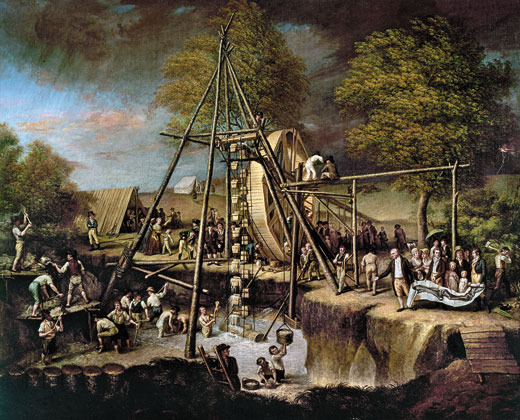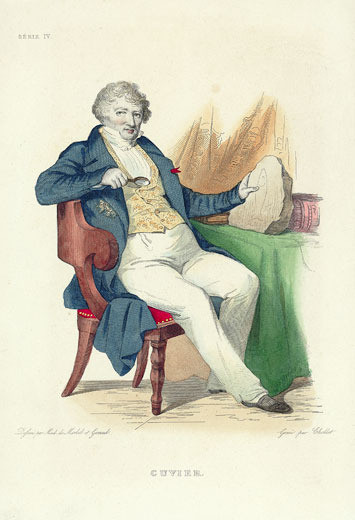Richard Conniff's Blog, page 118
June 25, 2010
Dimming Star: Not Worth $100 Million On His Own?
Andrew Star, the brilliant commodities trader, became notorious for his $100 million paycheck at post-bailout Citigroup. Now he's not doing so well on his own, according to today's Wall Street Journal. The hedge fund he launched is down 10 percent. That rocky start fits a behavioral pattern I described recently in Men's Health magazine:
Men tend to build a power base within the company and focus obsessively on it. But at the same time, oddly, they discount the importance of in-house...
June 23, 2010
"Will Work For Brain Scans" on NPR
NPR recently aired a version of my short piece about hunting for jobs on the Internet:
It's about two minutes long and kind of funny, so go to this NPR web site and click on "Listen to this story."
P.S. So far I remain happily unemployed (as I have been for 25 years and counting).






May 28, 2010
Urban Animal: The Rise of Urban Ecology
This idea of using trees to remake cities and neighborhoods on more natural lines reflects a modern urban ecology movement that got its start one fall day in 1988. A Yale forestry professor named Bill Burch had just delivered a talk about the community-based forestry program that he was helping to develop in rural Nepal, when a member of the audience, Ralph Jones, demanded, "Why are you not doing that here in our cities?" Jones had just become director of Baltimore's recreation and parks...
May 24, 2010
An Urban Species: Stopping Stormwater Runoff with Trees
The idea that trees can build better cities has recently helped launch "million-tree" initiatives in Los Angeles, New York, Salt Lake City, Indianapolis, Denver, Houston and other cities, generally with a timetable of planting that many new trees within five or 10 years. Corporations and other organizations not normally associated with environmental causes have also signed on to the movement, with the American Bar Association, for instance, committing to planting a million trees by...
May 20, 2010
An Urban Species
A few years ago, for the first time in our history as a species, Homo sapiens became a predominantly urban species, as people worldwide shook off the dust of rural life and moved to town. We crossed the halfway mark sometime in 2007 or 2008, according to a United Nations estimate, en route from being about 30 percent urban in 1950 to 60 percent urban by 2030. The trend is even more advanced in the United States. About 80 percent of Americans now live in urban areas, which also sprawl a...
April 20, 2010
Will Work for Brain Scans
Here's a back page I wrote for the May issue of Smithsonian:
You know those days when your income no longer quite equals your outgo? Or when a friend suddenly discovers that Bangalore is not a party treat, but the new home in southern India of what used to be his career? That's when I turn for comfort to the offerings on Internet job sites like Craigslist.
Naturally I skip past all the practical stuff. I know I would be a truly fine database administrator and an important addition to...
April 5, 2010
All-American Monsters–Part 5 (A Very Big Cheese)
It was only the world's second reconstruction of a fossil species (the one prior attempt being a decidedly less thrilling giant ground sloth in Madrid), and it became a national sensation, with word spreading until "the masses of the people were now even more eager than the scientists to view the great American wonder," according to Peale biographer (and descendant) Charles Coleman Sellers. "The mere idea of bigness stirred every heart." Peale's "mammoth" would turn out to be a mastodon, but ...
April 1, 2010
All-American Monsters–Part 4 (Exhuming the Mammoth)

Peale's "Exhuming the Mammoth"
In Philadelphia, the portrait artist Charles Willson Peale first examined incognitum bones from the Ohio River Valley in 1783, and the encounter set him on what he called an "irresistibly bewitching" quest for knowledge about the natural world, leading him to create what was in effect America's first national museum. (The Smithsonian Institution was still more than a half-century in the future.) Tickets to Peale's museum, in Philadelphia, bore the slogan "The...
March 30, 2010
All-American Monsters–Part 4 (The Birth of Extinction)

Georges Cuvier proved extinction was fact, not heresy.
The discovery of such monstrous creatures raised troubling questions. Cuvier made the case that both mammoths and mastodons had vanished from the face of the earth; their bones were just too different from any known pachyderm. It was the first time the scientific world accepted the idea that any species had gone extinct—a challenge to the doctrine that species were a permanent, unchanging heritage from the Garden of Eden. The...




